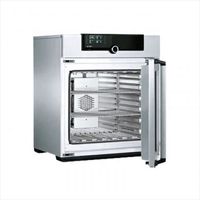Cast brass/copper heater
-
Supplier: Xinghua Rongfeng Electric Furnace Accessories Factory -
Region: Jiangsu, China -
Contact: Mr wen sheng zhang -
Price: $28.00 / 3 - 49 pieces
$24.00 / 50 - 999 pieces
$15.00 / >=1000 pieces -
Min. Order: 3 pieces
Product details
| weight: | 2KG | Health status: | new |
| Energy source: | electrical | Video outbound inspection: | if |
| Marketing type: | 2020 new products | Voltage: | 24~400V |
| Place of origin: | Chia | Supply capacity: | 10,000 pieces per month |
| After-sales service provided: | Video technical support | Post-warranty service: | Video technical support |
| type: | Flexible heater | range of working temperature: | 50-600℃ |
| Certification: | CE | payment terms: | L/C, Western Union, D/P, D/A, T/T, MoneyGram |
| Mechanical test report: | if | port: | Shanghai |
| Core component warranty: | 1 year | Package preview: | |
| Local service locations: | China | Warranty: | 1 year |
| Core components: | Brass, heating tube | Packaging details: | export package |
| Applicable industries: | Plastic machinery, molds, plumbers, cable machinery | Main selling points: | Easy to operate |
| Showroom location: | China | Material: | brass |
Product Description
Name | cast copper heater | |||
Operating temperature | 0~600 | |||
shape | customizable | |||
Power density | 2.5~8W/cm2 | |||
The cast copper electric heater is a metal casting heater that is bent and formed with a tubular electric heating element as the heating element. It enters a mold with a metal alloy material as the shell and is centrifugally cast into various shapes, including round, flat, right-angled, air-cooled, water-cooled and other special shapes. The surface load of cast aluminum can reach 2.5-3w/cm2, and the working temperature is 300-400°C; the surface load of cast copper can reach 3.5-8.0w/cm2, and the working temperature is between 400°C and 600°C; the surface load of cast iron can reach 4.5 -6.0w/cm2, working temperature is 400-600℃. A metal cast heater is a heater with even heat distribution. Metal alloy with good thermal conductivity ensures uniform temperature on the hot surface and reduces hot and cold spots in the equipment. It has the advantages of long life, good thermal insulation performance, strong mechanical properties, corrosion resistance, and magnetic field resistance. The outer heat dissipation surface is equipped with a heat preservation device, and the inner heat dissipation surface is sintered with infrared rays to save power. Main uses: widely used in plastic machinery, molds, cable machinery, alloy die-casting machines, pipelines, chemicals, rubber, petroleum and other equipment. Precautions for the use of cast aluminum electric heaters: 1. The working voltage must not exceed the rated value; the relative air humidity is not high. , no explosive/explosive and corrosive/corrosive gases. 2. The wiring part should be placed outside the heating layer and insulation layer, and the shell should be grounded; avoid contact with corrosive media, explosive media and water; the leads should be able to withstand the temperature and heat load of the wiring part for a long time, and the wiring screws should be tightened Avoid using excessive force. 3. Metal casting heaters should be placed in a dry place. If the insulation resistance is lower than 1mΩ due to long-term storage, it can be baked in an oven at about 200°C for 5-6 hours to return to normal. Or reduce the voltage and heat until the insulation resistance recovers. 4. The metal casting heater should be fixedly positioned, the heating area and the heating body are closely connected, and empty heating is not allowed. When dust or pollutants are found on the surface, they should be cleaned in time before use to avoid affecting heat dissipation and shortening the service life. 5. The magnesium oxide powder at the outlet end of the electric heating tube can prevent the penetration of pollutants and water in the use site, thereby preventing the occurrence of leakage accidents.







Specification
thing | value |
VIEW MORE
You may like
-
Laboratory vacuum drying oven CE certification

-
SFM Min 12v 24v 36v 48v 3D printer electric heating tube cartridge heater

-
220v 2500w plastic extruder heater electric mica heating tape

-
Manufacturer of metal coil induction electric heating systems

-
Electric Quartz Radiant Heater Custom Size White Quartz Heater

-
Industrial electric furnace induction heating coil

-
Straight Stainless Steel Tube Heaters for Ovens

-
12-48V 2500W ZVS Induction Heating Module Board High Frequency Durable Professional PCB Board Replacement

-
5-12V 120W Induction Hot Plate Flyback Driver Heater DIY Cooker + Ignition Coil

-
Fan/pig heating equipment for industrial poultry heating












